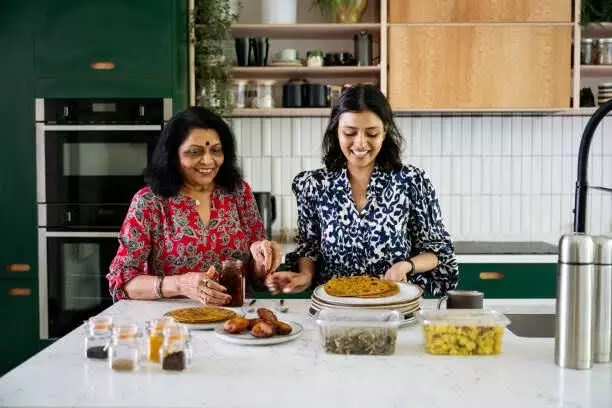World Food Safety Day: How home kitchens are first line of defence in India
Home cooks, especially in older generations, use time-tested methods that predate formal food science
By Anoushka Caroline Williams
Representational Image
Hyderabad: June 7 marks World Food Safety Day, a global reminder that safe food is a collective responsibility. While food safety is often associated with government inspections and industrial hygiene standards, much of it also begins at home — in everyday kitchens, handled by everyday cooks.
In Indian households, particularly, food safety is passed down as tradition, not training, through smell, touch, sight, and instinct. Generations of home cooks have relied on experience to detect spoilage, prevent contamination, and ensure the health of those they feed.
The First Line of Defence: Home Kitchens
“In most Indian families, the kitchen is the first and last checkpoint for food safety,” says Dr. Aditi Sharma, a microbiologist and food safety consultant speaking to NewsMeter. “What we call ‘kitchen wisdom’ is a form of low-tech, sensory-based quality control.”
For instance, sour milk is sniffed and repurposed into paneer or kadhi, grains are sun-dried to prevent infestation, and pulses are washed thoroughly to remove dust or debris. These aren’t mere rituals — they are food safety practices honed over time.
Spoilage Tests Without Thermometers
Home cooks, especially in older generations, use time-tested methods that predate formal food science.
The Rice Smell Test: Cooked rice left overnight is smelled before being reused. If it smells sour or sticky, it’s discarded.
Frothing in Milk: In many homes, milk is boiled twice daily. If it froths unusually or separates too quickly, it’s seen as a sign of adulteration.
Oil Bubble Check: When frying papads or pooris, excessive bubbling is taken as a sign of moisture in the oil, which can reduce shelf life and safety.
Hyderabad-based home chef Sabiha Fatima, who runs a small tiffin service from her apartment, says, “You don’t need a lab to know when food has turned. My nose and hands are enough. My mother taught me to trust them.”
Cultural Practices Rooted in Caution
Many Indian cooking habits evolved to address the challenges of food preservation in a hot, humid climate.
Tempering spices in oil not only enhances flavor but also acts as an antimicrobial step.
Fermentation of idli and dosa batter is timed based on weather conditions — too long, and it spoils.
Refrigeration rituals, like not mixing hot and cold foods, stem from an understanding of bacterial growth.
“Even small rules like covering milk with a muslin cloth or using separate ladles for raw and cooked food serve real hygienic purposes,” says Lakshmi Ravi, a homemaker.
Modern Tools, Traditional Knowledge
In urban homes, this inherited wisdom is now supported by digital tools — food expiry alerts on apps, refrigerator organization systems, and online tutorials. But the principles remain unchanged.
Nutritionist Rita Das explains, “Technology can assist, but it cannot replace the instincts built over years of cooking. That’s why food poisoning cases are often lower in homes than in some commercial kitchens — there’s personal accountability.”
Home Food Safety Is Also Mental Load
While often overlooked, the constant monitoring of food safety is also a form of emotional and mental labour, performed mostly by women.
From smelling raw chicken to checking bread for fungus, this vigilance is daily, unpaid work. On World Food Safety Day, recognising this invisible contribution is as important as talking about lab testing or regulation.
The Bigger Picture
Globally, foodborne illnesses affect 600 million people annually, according to the WHO. While government policies and supply chain checks are essential, safe food also depends on what happens at the consumer end, and for millions of Indians, that’s the home kitchen.
“Food safety doesn’t start in the lab. It starts in a home kitchen — with someone checking, boiling, tasting, and making decisions every day,” says Dr. Sharma.